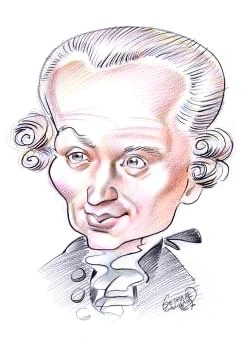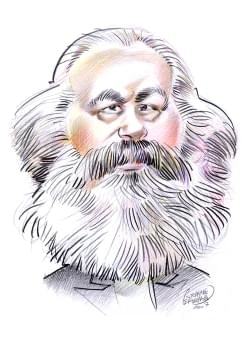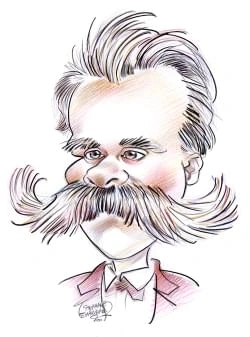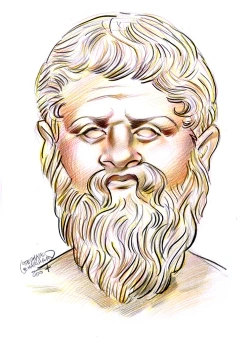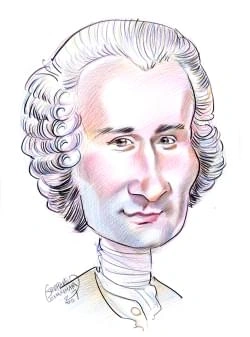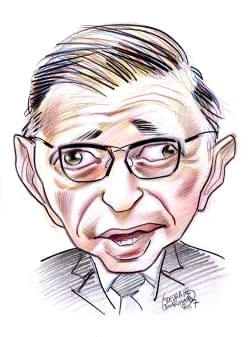298 résultats pour "without"
-
Rhinoceros - biology.
Male and female rhinos have a similar physical appearance, although male rhinos are usually larger than females, with the size difference varying between species. Inthe wild, some rhinos probably live into their late 40s, and they have survived into their 30s in captivity. IV TYPES OF RHINOCEROSES Until recently, mammalogists divided the rhinoceros family into three subfamilies, each with different characteristics. Scientists now believe that living rhinos belong to asingle subfamily, although...
-
Parkinson Disease.
III SYMPTOMS Parkinson disease most notably affects motor control (muscle activity). The disease progresses differently for each individual—symptoms develop swiftly in some peopleand slowly in others. Some Parkinson patients may develop problems that affect their intellect or ability to reason, or they may suffer from depression or anxiety. A Motor Control Problems Doctors look for the presence of four principal symptoms in patients they suspect may have Parkinson disease. Tremor (the involun...
-
Cold War.
With this, all the countries of Eastern Europe were under Communist control, and the creation of the Soviet bloc was complete. The events of 1948 contributed to agrowing conviction among political leaders in both the United States and the USSR that the opposing power posed a broad and fundamental threat to their nation’sinterests. The Berlin blockade and the spread of Communism in Europe led to negotiations between Western Europe, Canada, and the United States that resulted in the NorthAtlantic...
-
Cold War .
With this, all the countries of Eastern Europe were under Communist control, and the creation of the Soviet bloc was complete. The events of 1948 contributed to agrowing conviction among political leaders in both the United States and the USSR that the opposing power posed a broad and fundamental threat to their nation’sinterests. The Berlin blockade and the spread of Communism in Europe led to negotiations between Western Europe, Canada, and the United States that resulted in the NorthAtlantic...
-
Cold War - U.
With this, all the countries of Eastern Europe were under Communist control, and the creation of the Soviet bloc was complete. The events of 1948 contributed to agrowing conviction among political leaders in both the United States and the USSR that the opposing power posed a broad and fundamental threat to their nation’sinterests. The Berlin blockade and the spread of Communism in Europe led to negotiations between Western Europe, Canada, and the United States that resulted in the NorthAtlantic...
-
Scramble for Africa.
additional territorial grabs. The most significant of these rules stated that colonial powers were obligated to notify each other when they claimed African territory.Further, subsequent “effective occupation” of the claimed area was necessary for the claim to remain valid. Through it all, as Europeans negotiated their rights toAfrican territory, not a single African was present. Once the conference was over, it was clear that a European Scramble for African territories was underway. Southern Afr...
-
Ballet
I
INTRODUCTION
Tchaikovsky's The Nutcracker
The Nutcracker is a classic ballet with music by Peter Ilyich Tchaikovsky.
Joffrey Ballet SchoolTraining for classical ballet dancers must begin when the students are very young. Here, teacher Dorothy Lister workswith her pre-ballet class of six-year-olds at the Joffrey Ballet School. These students are learning the five basic positions ofclassical ballet.Susan Kunklin/Photo Researchers, Inc. Different systems of ballet training have evolved, named after countries (Russia, France) or teachers (Italian dancer Enrico Cecchetti, Danish choreographer AugustBournonville). T...
-
From Moby Dick - anthology.
'My song for ever shall recordThat terrible, that joyful hour;I give the glory to my God,His all the mercy and the power.' Nearly all joined in singing this hymn, which swelled high above the howling of the storm. A brief pause ensued; the preacher slowly turned over the leaves of theBible, and at last, folding his hand down upon the proper page, said: 'Beloved shipmates, clinch the last verse of the first chapter of Jonah—'And God had prepared agreat fish to swallow up Jonah.' 'Shipmate...
-
-
Social Psychology.
During the 1960s, American psychologist Stanley Milgram studied a form of social influence stronger than conformity: obedience to authority. In a famous series ofexperiments that attracted controversy about human research ethics, Milgram put each of 1,000 subjects into a situation in which they were ordered by anexperimenter to administer painful electric shocks to a confederate (who did not actually receive any shocks). The subjects in these studies were led to believe that theywere acting as '...
-
Skin.
I
INTRODUCTION
Skin, outer body covering of an animal. The term skin
III SKIN APPENDAGES In humans, the skin appendages, or structures embedded in the skin, include hair, nails, and several types of glands. Glands are groups of cells that produce andsecrete substances needed by other parts of the body. In other vertebrates, the skin appendages include scales (in fish and reptiles) and feathers (in birds). Together,the skin and the skin appendages are known as the integumentary system of the body. A Hair Hair is a distinguishing characteristic of mammals, a gro...
-
Metalwork
I
INTRODUCTION
Metalwork, in the fine arts, objects of artistic, decorative, and utilitarian value made of one or more kinds of metal--from precious to base--fashioned by either casting,
hammering, or joining or a combination of these techniques.
Early Bronze DiskThis disk with the head of Acheloos, an Etruscan river god, was made of bronze, an alloy of copper and tin, sometime inthe early 5th century bc. It comes from the necropolis of Monte Quaglieri in Tarquinia. Alloys are made by smelting twodifferent metals together.Scala/Art Resource, NY Knowledge of smelting ultimately led to knowledge of mixing different ores together in the smelting process to produce simple alloys. This followed an intermediateperiod, about 3000 BC, when comp...
-
Relativity
I
INTRODUCTION
Albert Einstein
In 1905 German-born American physicist Albert Einstein published his first paper outlining the theory of relativity.
in calculating very large distances or very large aggregations of matter. As the quantum theory applies to the very small, so the relativity theory applies to the verylarge. Until 1887 no flaw had appeared in the rapidly developing body of classical physics. In that year, the Michelson-Morley experiment, named after the American physicistAlbert Michelson and the American chemist Edward Williams Morley, was performed. It was an attempt to determine the rate of the motion of the earth through t...
-
Roman Catholic Church.
comprehensiveness of its doctrinal tradition. Locating its beginnings in the earliest Christian communities and refusing to acknowledge any decisive break in its history,the Roman Catholic Church considers itself heir to the theological traditions of the apostolic, patristic, medieval, and modern periods. The church does not in principleexclude any theological method, and since the encyclical of Pope Pius XII Divino Afflante Spiritu (1943) it has officially sanctioned modern principles of exeg...
-
Tree - biology.
The major parts of a tree are its roots, trunk, leaves, flowers, and seeds. These components play vital roles in a tree’s growth, development, and reproduction. A Roots Trees are held in place by anchoring organs called roots. In addition to anchoring the tree, roots also absorb water and minerals through tiny structures called roothairs. From the roots the water and mineral nutrients are carried upward through the wood cells to the leaves. Although the internal structure of most kinds of roots...
-
Ear.
I
INTRODUCTION
Ear, organ of hearing and balance. Only vertebrates, or animals
line or rotates in any direction. Each canal also contains sensory areas with sensory hair cells that project into a cone-shaped cap of gelatin. Two of the semicircularcanals are in a vertical position and are used to detect vertical movement, such as jumping or falling. The third canal is horizontal and detects horizontal movement,such as turning or spinning. The action of the canals depends on the inertia of the fluid inside. When the motion of the body changes, the fluid lags behind, causing...
-
Sexual Harassment.
A person who believes he or she has experienced sexual harassment on the job has a limited period of time in which to file a complaint with the EEOC. After the EEOCinvestigates the matter, it issues a right to sue letter, regardless of its conclusions about the matter. The victim then has 90 days to file a lawsuit against the employer in federal court. If he or she is successful in the lawsuit, the victim can receive up to $300,000 in compensatory damages for each incident of unlawful harassme...
-
-
Pollution.
One of the greatest challenges caused by air pollution is global warming, an increase in Earth’s temperature due to the buildup of certain atmospheric gases such ascarbon dioxide. With the heavy use of fossil fuels in the 20th century, atmospheric concentrations of carbon dioxide have risen dramatically. Carbon dioxide and othergases, known as greenhouse gases, reduce the escape of heat from the planet without blocking radiation coming from the Sun. Because of this greenhouse effect,average glob...
-
Inca Empire.
The Incas’ public works were built through a labor tax known as mit’a. This tax required most people incorporated into the Inca Empire to provide labor for public worksduring certain portions of each year. This labor tax supported large-scale public works that required the marshalling of large labor forces, such as for the building offorts, roads, and bridges, or the mining of metals and gems. It also allowed the emperor to raise large armies to undertake wars of conquest. Road building was impo...
-
Inca Empire - History.
The Incas’ public works were built through a labor tax known as mit’a. This tax required most people incorporated into the Inca Empire to provide labor for public worksduring certain portions of each year. This labor tax supported large-scale public works that required the marshalling of large labor forces, such as for the building offorts, roads, and bridges, or the mining of metals and gems. It also allowed the emperor to raise large armies to undertake wars of conquest. Road building was impo...
-
Alcoholism.
Although a consensus is growing among health professionals that alcohol dependence is a disease, society’s attitudes toward individuals with drinking problems remainambivalent and confused. Until the mid-20th century, the typical picture of the alcoholic was of someone without steady employment, unable to sustain familyrelationships and most likely in desperate financial straits. But this stereotype was largely dispelled when highly respected people publicly admitted their alcoholdependence and...
- Midnighters
-
Maya Civilization.
destruction was directed mostly at temples in the ceremonial precincts; it had little or no impact on the economy or population of a city as a whole. Some city-states didoccasionally conquer others, but this was not a common occurrence until very late in the Classic period when lowland civilization had begun to disintegrate. Until thattime, the most common pattern of Maya warfare seems to have consisted of raids employing rapid attacks and retreats by relatively small numbers of warriors, most o...
-
Maya Civilization - History.
destruction was directed mostly at temples in the ceremonial precincts; it had little or no impact on the economy or population of a city as a whole. Some city-states didoccasionally conquer others, but this was not a common occurrence until very late in the Classic period when lowland civilization had begun to disintegrate. Until thattime, the most common pattern of Maya warfare seems to have consisted of raids employing rapid attacks and retreats by relatively small numbers of warriors, most o...
-
Lithuania - country.
pollution. III PEOPLE Ethnic Lithuanians constitute about 80 percent of the country’s population. The proportion of Lithuanians increased slightly in the first years after the dissolution of theSoviet Union—many Lithuanians returned to their homeland from that country and abroad while some Russians, Ukrainians, and Belarusians left the country. Russiansand Poles constitute the country’s largest minority groups, each accounting for roughly 7 percent of the population. Jews were the largest mino...
-
-
Soccer.
Two assistants, known as linesmen or referees’ assistants, aid the referee. Their primary job is to alert the referee when balls go out of the playing area and to assist inmaking offsides calls (see Rules section below). The assistants carry flags, which they wave when the ball leaves the playing area or use to point to the spot where a foul was committed. V EQUIPMENT Soccer is played with a round leather ball. It is between 68 and 71 cm (27 and 28 in) in circumference and weighs between 396...
- On the road
-
United States History - U.
and improved upon the designs of Arab sailing ships and learned to mount cannons on those ships. In the 15th century they began exploring the west coast ofAfrica—bypassing Arab merchants to trade directly for African gold and slaves. They also colonized the Madeira Islands, the Azores, and the Cape Verde Islands andturned them into the first European slave plantations. The European explorers were all looking for an ocean route to Asia. Christopher Columbus sailed for the monarchs of Spain in 149...
-
United States History - U.
and improved upon the designs of Arab sailing ships and learned to mount cannons on those ships. In the 15th century they began exploring the west coast ofAfrica—bypassing Arab merchants to trade directly for African gold and slaves. They also colonized the Madeira Islands, the Azores, and the Cape Verde Islands andturned them into the first European slave plantations. The European explorers were all looking for an ocean route to Asia. Christopher Columbus sailed for the monarchs of Spain in 149...
-
Labor Unions in the United States - U.
National Guard troops were used against the strikers, with the result that the strike was lost and the union that conducted it virtually destroyed. In 1894 a strike by theAmerican Railway Union against the Pullman Palace Car Company was defeated by an injunction issued under the Sherman Antitrust Act of 1890, which made acombination or contract in restraint of trade illegal. Thereafter employers used injunctions with increasing frequency and effectiveness as an antistrike weapon. See also Hours...
-
Mexico City - geography.
The park houses some of Mexico's most important public buildings, including Chapultepec Castle. Construction of the castle began in 1783. Positioned on the park’shighest elevation, the castle functioned as a fortress during colonial times. It once served as the presidential residence and now houses the National Museum of History,which includes murals by 20th-century Mexican painter Juan O'Gorman. Los Pinos, the official residence and working offices of the president, is also on the grounds, buti...
-
Saskatchewan (province) - Geography.
The length of the frost-free season varies within the province. In the southwest, particularly in the valley lands along the South Saskatchewan River, the frost-freeperiod ranges from 150 to 160 days. Regina enjoys about 123 frost-free days, and Saskatoon has about 111. The far north has only from 85 to 95 frost-free days. One important characteristic of Saskatchewan’s climate is the great variability in temperature and precipitation from year to year, which is often critical for agriculture.The...
-
Saskatchewan (province) - Canadian History.
The length of the frost-free season varies within the province. In the southwest, particularly in the valley lands along the South Saskatchewan River, the frost-freeperiod ranges from 150 to 160 days. Regina enjoys about 123 frost-free days, and Saskatoon has about 111. The far north has only from 85 to 95 frost-free days. One important characteristic of Saskatchewan’s climate is the great variability in temperature and precipitation from year to year, which is often critical for agriculture.The...
-
-
Aboriginal Australians - History.
Until Europeans began to settle in Australia in 1788, the Aboriginal way of life was supported by hunting, gathering, and fishing. Like other hunting and gatheringpeoples, Aboriginal people had an extremely detailed knowledge of their environment, especially plant ecology and animal behavior. The deep connection betweenAboriginal people and the natural world influenced every part of their culture, including their food gathering, tools, trade, religion, art, music, language, and socialorganizatio...
-
Native Americans of North America.
addition to smallpox and measles, explorers and colonists brought a host of other diseases: bubonic plague, cholera, typhoid fever, scarlet fever, pleurisy, mumps,diphtheria, pneumonia, whooping cough, malaria, yellow fever, and various sexually transmitted infections. Despite the undisputed devastation wreaked on Indian populations after European contact, native populations showed enormous regional variability in their response todisease exposure. Some peoples survived and, in some cases, even...
-
Native Americans of North America - Canadian History.
addition to smallpox and measles, explorers and colonists brought a host of other diseases: bubonic plague, cholera, typhoid fever, scarlet fever, pleurisy, mumps,diphtheria, pneumonia, whooping cough, malaria, yellow fever, and various sexually transmitted infections. Despite the undisputed devastation wreaked on Indian populations after European contact, native populations showed enormous regional variability in their response todisease exposure. Some peoples survived and, in some cases, even...
-
Antarctica - Geography.
The maximum area of sea ice surrounding Antarctica each winter varies from year to year. A marked decline during the 1970s appears to have reversed in more recentdecades, except in the Antarctic Peninsula area. This area has lost almost 40 percent of its sea ice since the start of the 1980s. Sea ice is important to marine life. Krillfeed on algae that live under the sea ice and are released when the ice melts in spring and summer. In turn, many marine animals feed on krill. Emperor penguinsbreed...
-
George Washington
I
INTRODUCTION
George Washington (1732-1799), first president of the United States (1789-1797) and one of the most important leaders in United States history.
A2 Promotion This was Washington’s first experience with the difficulties of raising troops while lacking equipment, clothing, and funds. Apparently he thought his efforts worthy ofsome recognition and successfully applied to Dinwiddie for a lieutenant colonel’s commission. He left Alexandria, Virginia, early in April with about 150 poorly equippedand half-trained troops. A3 First Battles Before he had advanced very far, Washington received news that the French had driven Trent’s men back from...
-
George Washington.
A2 Promotion This was Washington’s first experience with the difficulties of raising troops while lacking equipment, clothing, and funds. Apparently he thought his efforts worthy ofsome recognition and successfully applied to Dinwiddie for a lieutenant colonel’s commission. He left Alexandria, Virginia, early in April with about 150 poorly equippedand half-trained troops. A3 First Battles Before he had advanced very far, Washington received news that the French had driven Trent’s men back from...
-
George Washington
A2 Promotion This was Washington’s first experience with the difficulties of raising troops while lacking equipment, clothing, and funds. Apparently he thought his efforts worthy ofsome recognition and successfully applied to Dinwiddie for a lieutenant colonel’s commission. He left Alexandria, Virginia, early in April with about 150 poorly equippedand half-trained troops. A3 First Battles Before he had advanced very far, Washington received news that the French had driven Trent’s men back from...
-
Mississippi - geography.
The climate of Mississippi is characterized by long, hot, and humid summers and generally mild winters. The higher lands in the northeast are usually cooler than otherareas of the state. D1 Temperature Average January temperatures range from about 6° C (about 42° F) in northeastern Mississippi to about 12° C (about 54° F) along the Gulf Coast. No part of the stateis entirely free from freezing temperatures, but prolonged periods of extreme cold rarely occur. Temperatures more than 15° C (30° F)...
-
-
Mississippi - USA History.
The climate of Mississippi is characterized by long, hot, and humid summers and generally mild winters. The higher lands in the northeast are usually cooler than otherareas of the state. D1 Temperature Average January temperatures range from about 6° C (about 42° F) in northeastern Mississippi to about 12° C (about 54° F) along the Gulf Coast. No part of the stateis entirely free from freezing temperatures, but prolonged periods of extreme cold rarely occur. Temperatures more than 15° C (30° F)...
-
France - country.
In both the Paris and Aquitaine basins, fertile soils derived from limestone and wind-deposited dust, called loess, have supported prosperous agriculture since ancienttimes. Other lowlands in France are scattered and relatively small. They include the Alsace Plain in the east, bordering Germany, the valley of the Rhône River in thesoutheast, and the Languedoc Plain along the Mediterranean coast. A2 Uplands France contains several regions of uplands, the worn down remains of ancient mountain sys...
-
Genetics - biology.
construct identical buildings. Just as each contractor would require a full copy of the blueprint to construct a complete building, each new cell needs a complete copy ofan organism’s genetic information to function properly. Organisms use two types of cell division to ensure that DNA is passed down from cell to cell during reproduction. Simple one-celled organisms and other organisms thatreproduce asexually—that is, without the joining of cells from two different organisms—reproduce by a proces...
-
United Kingdom - country.
B Natural Regions and Topography The island of Great Britain can be divided into two major natural regions—the highland zone and the lowland zone. The highland zone is an area of high hills andmountains in the north and west. The lowland zone in the south and east consists mostly of rolling plains. The zones are divided by an imaginary line running throughEngland from the River Exe on the southwest coast to the mouth of the River Tees on the northeast coast. The lowland zone has a milder climat...
-
Library (institution).
rooms, special galleries for exhibitions, auditoriums for lectures or concerts, computer rooms, children’s rooms, photocopy rooms, and classrooms. A3 Lending Materials As part of their mission to provide information resources to the community, public libraries allow users to borrow items from their collections for limited amounts of time.To be eligible to borrow public library materials, a user must register her or his name, address, and other basic information with the local library’s circulat...
-
Iran - country.
Zagros mountains. In the more arid central part of the country, wild pistachio and other drought-resistant trees grow in areas that have not been disturbed by humanactivity. Tamarisk and other salt-tolerant bushes grow along the margins of the Dasht-e Kavir. A wide variety of native mammals, reptiles, birds, and insects inhabit Iran. Many species of mammals—including wolves, foxes, bears, mountain goats, red mountainsheep, rabbits, and gerbils—continue to thrive. Others—including Caspian tigers,...
-
Cuba - country.
Only two land mammals, the hutia, or cane rat, and the solenodon, a rare insectivore that resembles a rat, are known to be indigenous. The island has numerous batsand nearly 300 kinds of birds, including vultures, wild turkeys, quail, finches, gulls, macaws, parakeets, and hummingbirds. The bee hummingbird of Cuba is thesmallest bird in the world. Among the few reptiles are tortoises, caimans, the Cuban crocodile, and a species of boa that can attain a length of 3.7 m (12 ft). More than700 speci...
-
Federal Republic of Germany - country.
B Rivers and Lakes Rivers have played a major role in Germany’s economic development. The Rhine River flows in a northwesterly direction from Switzerland through much of westernGermany and The Netherlands into the North Sea. It is a major European waterway and a pillar of commerce and trade. Its primary German tributaries include theMain, Mosel, Neckar, and Ruhr rivers. The Oder (Odra) River, along the border between Poland and Germany, runs northward and empties into the Baltic; it provides an...
}})


